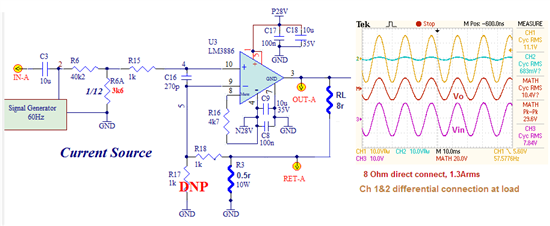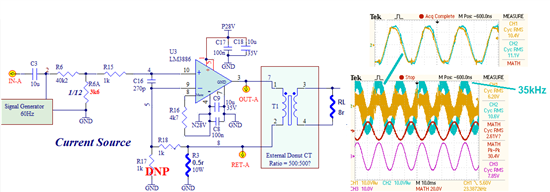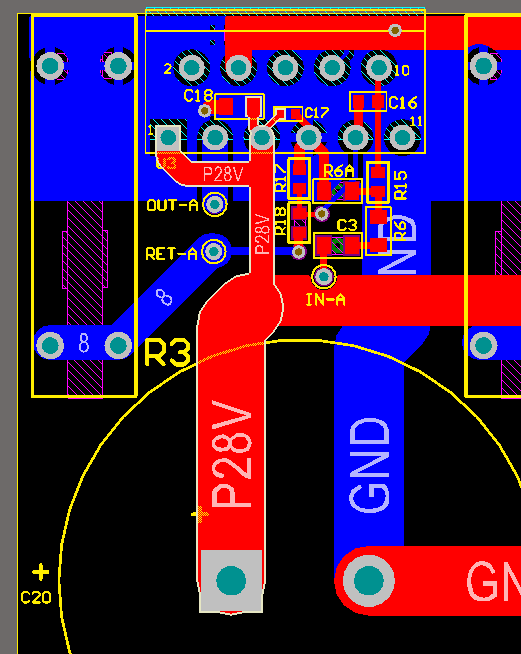I hope one of you amplifier gurus can help me with this problem. (I have minimal expirience with current amplifiers)
I have been asked to improve an existing 60Hz current source based on the LM3886. The present design can develop 0-2 Arms, and the goal is to increase the output to 4 Arms. Unfortunately the schematics, layout etc. for the original source are no longer available.
To get started I reverse engineered the existing circuit and created a new board that I believe is electrically similar to the original design. I say similar because I changed the through hole components to SMT so the layout is now different. The new circuit works under some conditions but will not operate with the desired load. The intended load is non-linear. I have done some testing as follows:
Test 1) output directly connected to an 8 Ohm resistive load:
- Appears to work well, output waveform is clean and will deliver >2Arms (SO FAR SO GOOD)
Test 2) similar to test 1, with a 500:500 CT between the amplifier and load:
- Works to some extent, output contains ~30kHz oscillation superimposed on 60Hz (see below) NEED TO FIX THE OSCILLATION!
- Oscillation appears to be common mode, (does not appear in CH1-CH2 display)
- Output level is lower (may need to increase drive when oscillation is fixed.
Test 3) with intended load:
This current source will be used to test a current measurement circuit used in an existing product. The device to be tested is normally connected to the power system via a 1000:1 CT. For the production test we use the above current source and a 500:500 CT to drive the DUT. The DUT both measures the current and is powered from the current being measured.
- Circuit as shown below (same current source but with DUT load)
- Works to some extent, output sinusoidal at very low levels (14Vp-p into DUT, very little current)
- Note: May not be relevant but the power supply rails on the old current source are +/- 40V, while my test setup only has +/-30V rails (for now, bigger lab supply on order) I don’t think this matters at this point
Increasing the drive quickly causes output waveform to change from sinusoidal to a “squarish” wave. If the drive is further increased, the waveform becomes a square wave and the measurement circuit on the DUT begins to detect the signal at very low levels . If the drive is further increased the amplitude of the square wave increases and then eventually starts to have drop-outs. The new current source can only produce very low levels compared to the original source (~ 0.1A vs. >2A). The lower power supply rails on my new test circuit may be contributing to the problem, but I expect there is more to the problem. The DUT load is peculiar in that it “harvests” power from the input current circuit, I’m somewhat surprised the old current source is able to drive this load but it does cleanly up to 2A rms.
The layout of the new current source looks like this:
I hope one of you gurus can make some suggestions as to how best to approach the problem.
Getting the source stable with the CT seems like the first step.
It's possible that when the power supply rails are higher +/-40 vs. +/-30 the source may be better equipped to drive the strange DUT load as the string of series diodes requires between 10 and 18V to forward bias (depending on current)
Jeff





